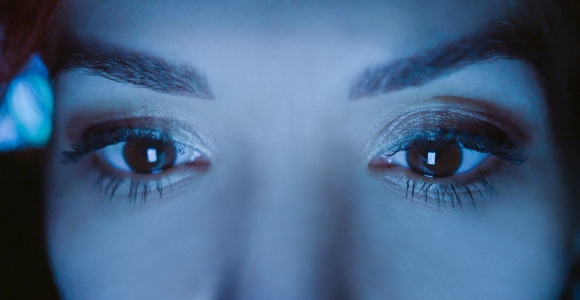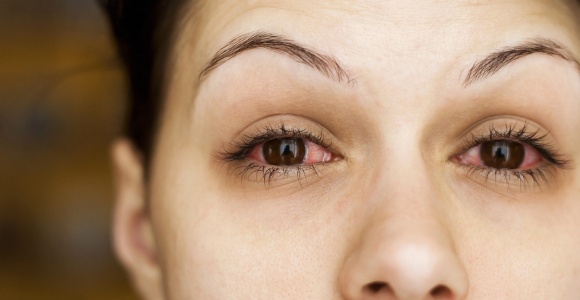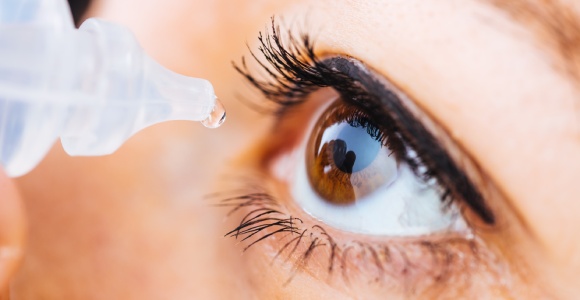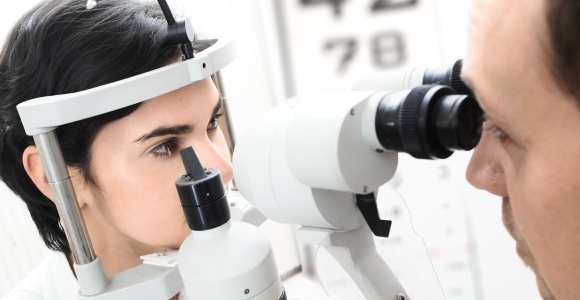News Title
7 everyday things that put your vision at risk
Most people engage in a number of everyday activities that unfortunately put their vision at risk.
You check your phones on a daily, oftentimes also nightly, basis, whether it is for work or play (most likely, both). Much of the time, we are doing so without protecting ourselves from excess exposure to blue light.
A hike in the woods and a day at the beach are great ways to spend time outdoors, but pack your sunglasses. Not protecting your eyes now can lead to vision issues as you grow older.
Several other common actions and behaviors can cause serious eye conditions, including cancer and blindness.
7 everyday things that can put your vision at risk
Are you guilty of any of these seven everyday actions that can put your vision at risk?
1. Spending too much time on screens

Screen time has significantly increased around the world. In fact, a new study finds that the worldwide average of daily screen time is 6 hours and 42 minutes per person, with people in some countries spending as many as 10 hours a day online.
The Philippines spends the most hours daily (about 10) on screens. Brazil, Thailand and Colombia all fall in the top five, at 9 or more hours a day.
The country in which residents spend the least amount of screen time? That’s Japan, where residents are on their devices for the least amount of time per day: 3 hours and 45 minutes.
How does all this screen time affect your vision? More time spent staring at devices raises the likelihood and severity of digital eye strain.
Symptoms of digital eye strain include dry or irritated eyes, blurred vision, neck and shoulder pain, headaches and difficulty falling asleep.
What can you do to cut your screen time? Limit your time looking at smartphones, e-readers and tablets. To fall asleep more easily, avoid screens before bedtime.
Another way to deal with all that screen time? Blue light glasses — special lenses block blue light that can interrupt your sleep cycle and may contribute to your digital eye strain.
2. Rubbing your eyes

Can you count the number of times you’ve rubbed your eyes today? Rubbing your eyes can lead to serious issues like scratched corneas and cause existing vision problems to worsen.
Rubbing your eyes also can transfer bacteria and germs you picked up when you touched a doorknob or borrowed a friend’s phone. One example of the danger of rubbing your eyes: Transferring bacteria from your hands to your eyes can lead to conjunctivitis (pink eye).
When you feel as if something (eyelashes or dust, for example) may be stuck in your eye, don’t rub your eyes. Rinsing your eyes with saline or water is a safer way to remove the debris.
3. Improperly caring for contact lenses

Caring for contact lenses properly is crucial for the health of your eyes, but some common abuses include sleeping in contacts, cleaning them incorrectly and wearing them in the shower or pool — all of which can lead to eye irritation or infection.
For example, sleeping or napping in your contact lenses can result in inflammation, blurry vision, light sensitivity and dry eye syndrome. Experts recommend taking out contacts regularly to give your eyes a break — even lenses that are approved for overnight use.
Study after study has found that contact lens wearers are not following the directions for care of their lenses. A 2015 study of adult contact lens wearers in Saudi Arabia found that 27.1% exhibited no hand washing or poor hand washing hygiene for handling their contacts, 35.7% of contact lens container hygiene was considered bad — and 1.6% of container hygiene was missing entirely.
In addition, one in five of these study participants changed their contact lenses irregularly, and as many as two thirds reported that they experienced side effects and complications from contact lens use that required medical attention.
It is important to know the risks of misusing contact lenses and to heed the advice and directions from your eye care professionals and contact lens makers.
4. Not wearing sunglasses

When you are spending time in the sun, protecting your eyes from ultraviolet (UV) radiation is crucial. Sunglasses are the best form of protection and comfort against bright sunlight.
Spending a day in the sun without shades, even short-term exposure, can lead to conditions such as photokeratitis, or “sunburn of the eye.” While photokeratitis is temporary, it is painful.
Damage from UV radiation also can lead to more long-term conditions, such as cataracts, and even to cancer of the eye (although rare), the eyelids or the skin around the eye.
When choosing a pair of sunglasses, it’s important to select a pair that offers the most protection from UV radiation — 99% to 100% UV protection to be exact. Look for this level of UV protection on both prescription and non-prescription sunglasses.
5. Overusing eye drops

Getting relief from itchy, dry, watery or red eyes can be as simple as using eye drops. However, using them excessively or improperly can potentially cause more problems for your eyes.
Overusing eye drops can lead to a dependency on them — and to clogged glands, which can be uncomfortable. Lubricating eye drops can actually wash away natural tears if they are used too often.
Whitening eye drops, which are used to treat redness, can cause blood flow to decrease. This can prevent essential nutrients and oxygen from reaching your eyes. As blood vessels struggle to deliver oxygen, they can grow larger and cause your eyes to appear even more red.
Allergy eye drops can be great for quick relief but should not be relied on as a permanent fix. Identifying the primary cause of an allergic response is more beneficial to both your eyes and your overall health in the long run.
If using eye drops causes your eye conditions to worsen, stop using the drops and consult an eye doctor, who can recommend or prescribe the best products for you.
6. Smoking

One of the biggest threats to your vision health is smoking, especially if it is a daily activity. Smoking causes significant lung damage, but it can also be a factor in eye conditions that lead to vision loss and blindness.
Some of the greatest vision risks for tobacco users are cataracts and macular degeneration.
Most cataracts develop slowly, causing vision to become blurry. Cataracts also grow worse over time and eventually can lead to loss of vision if they are not treated surgically.
Your central vision, which helps you recognize faces, can be impacted by macular degeneration. Central vision is vital for tasks such as driving and reading, as well as for seeing people and objects clearly.
Some new evidence also suggests that smoking can lead to glaucoma, a condition that increases pressure in the eye and can cause serious damage to eyesight.
Smoking can cause many health and vision problems, but you can protect yourself from these particular conditions in one step: by stopping your smoking habits immediately.
7. Missing regular eye exams

Regular eye exams are not a daily activity but rather an everyday decision that affects both the health of your vision and, potentially, your overall health.
Vision changes as you age can be affected by other health conditions. Eye exams are important because they can reveal indications of eye conditions that have not begun to show symptoms and can address bigger issues that are connected to eye health.
Professionals recommend getting your eyes checked at least every few years (more often as you get older or are at risk for developing eye conditions) to maintain the safety and health of your eyes, and to help prevent long-term issues such as vision loss.
IS IT TIME FOR AN EYE EXAM? Find an optician near you and schedule a comprehensive exam.
